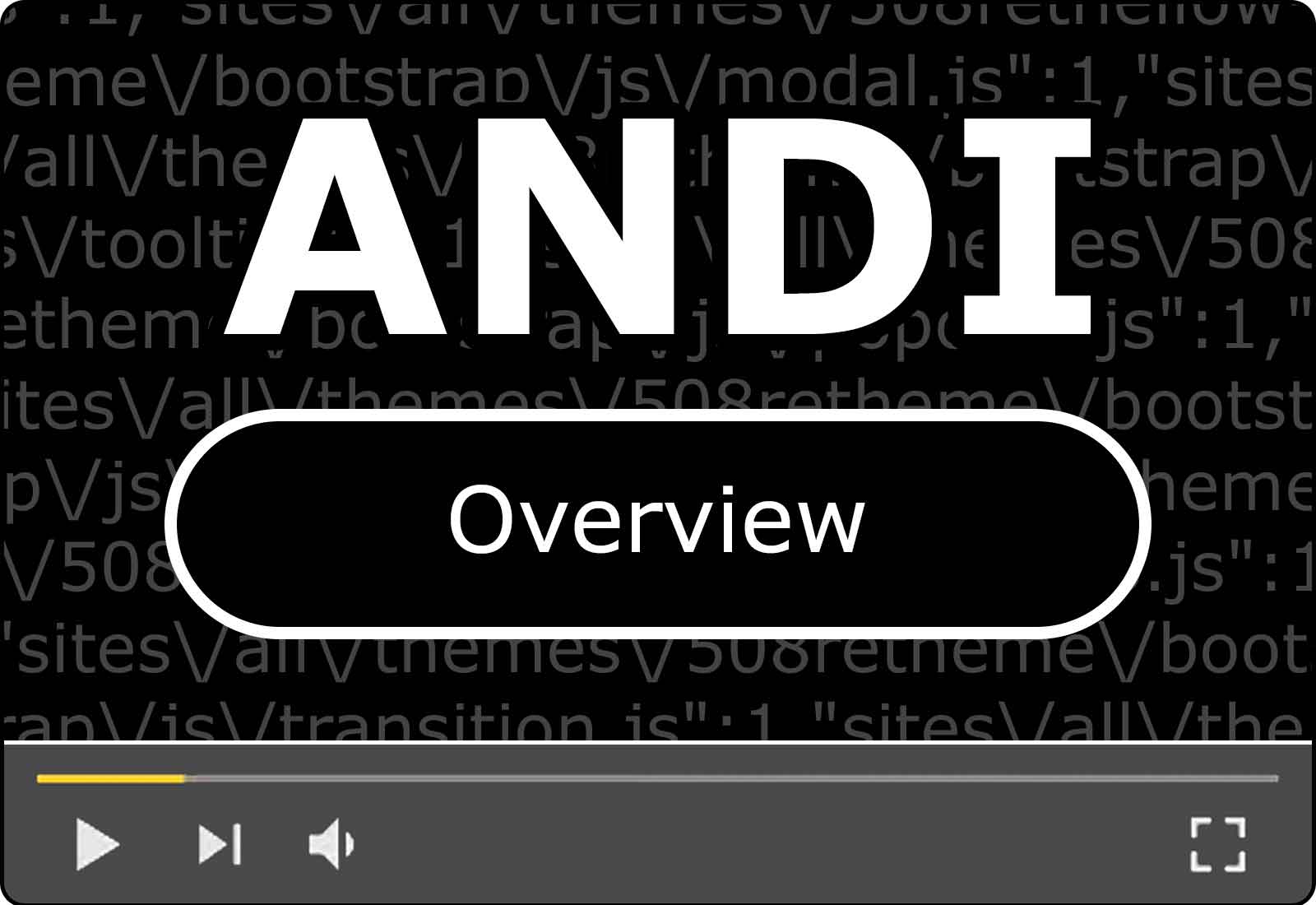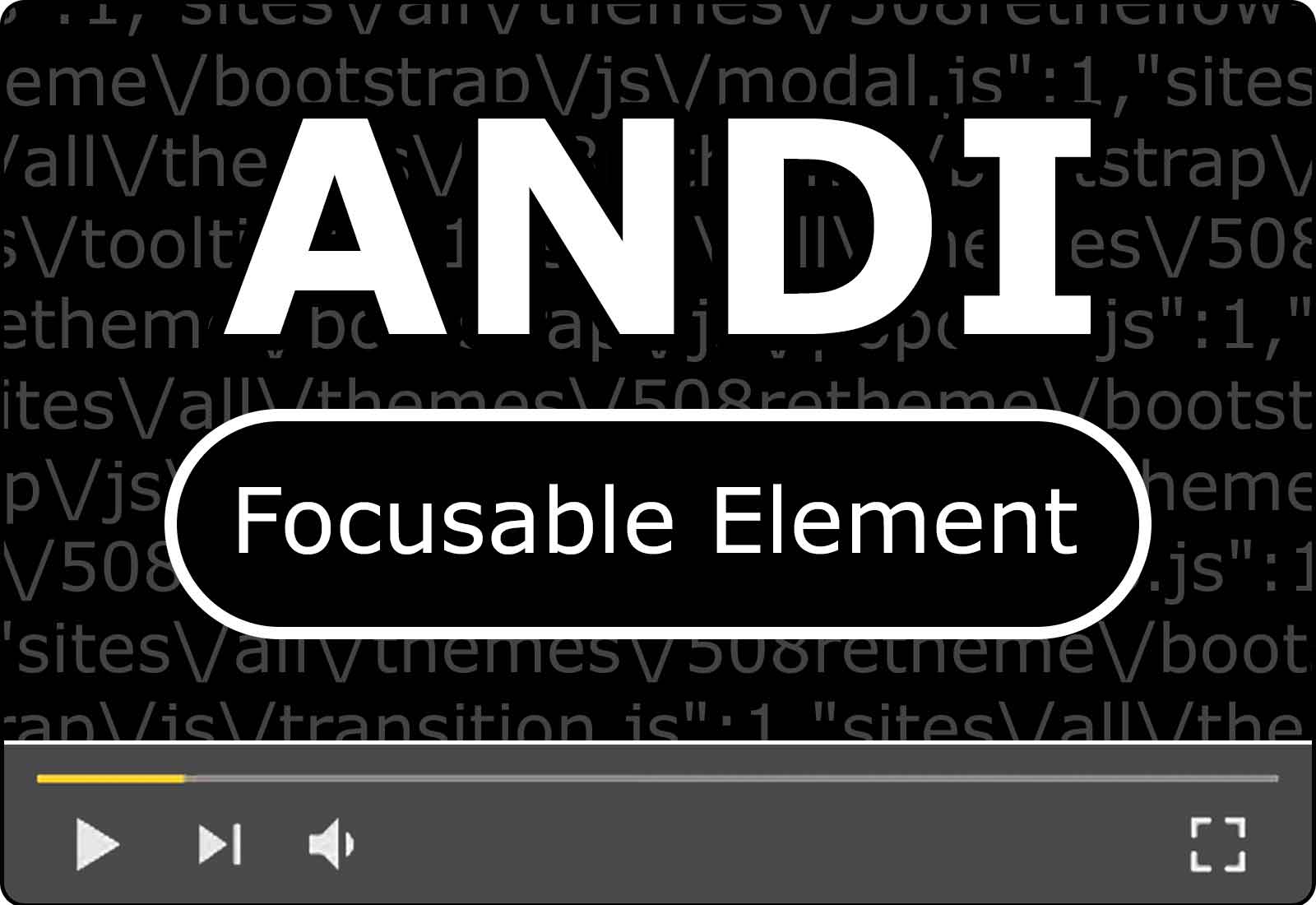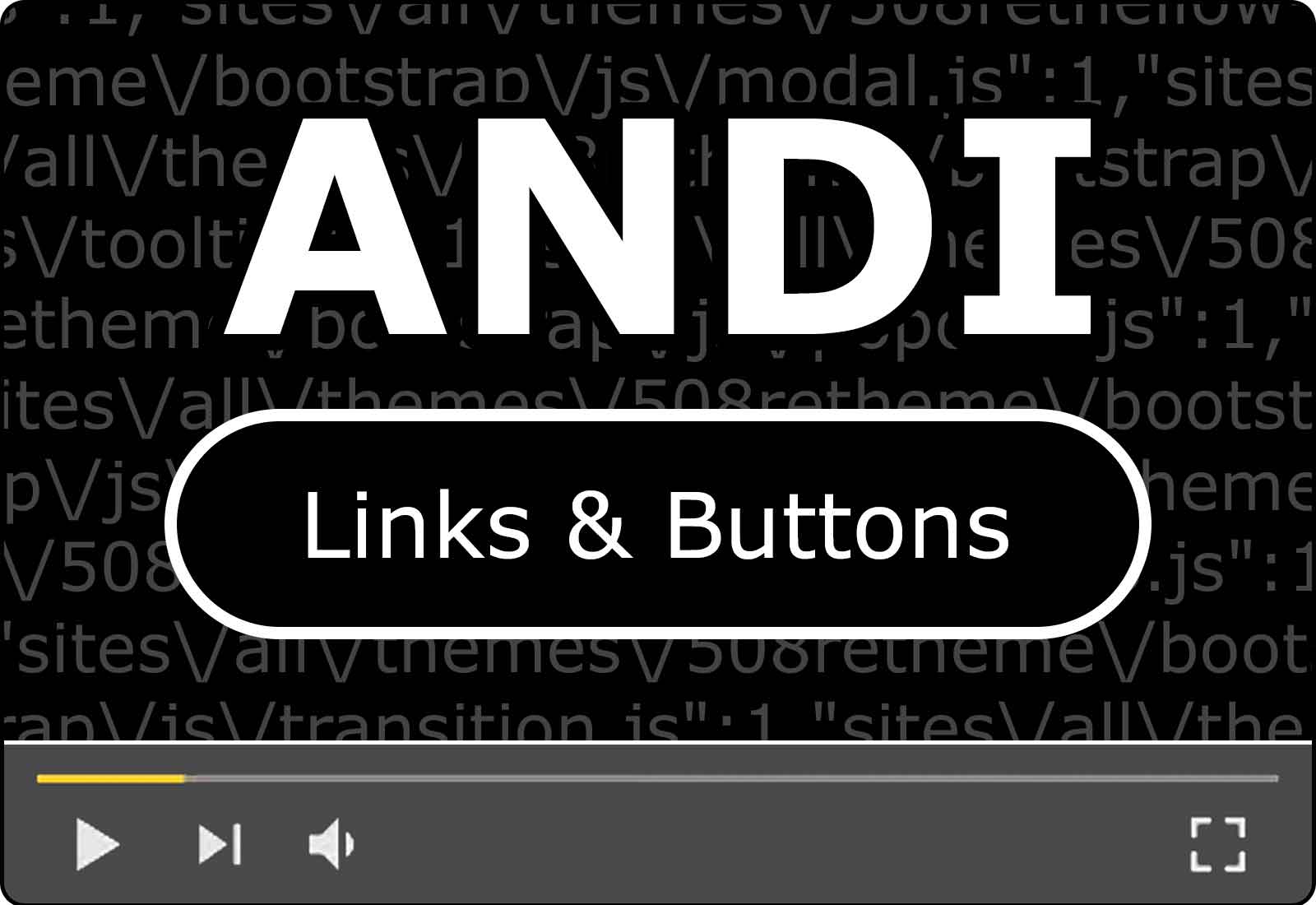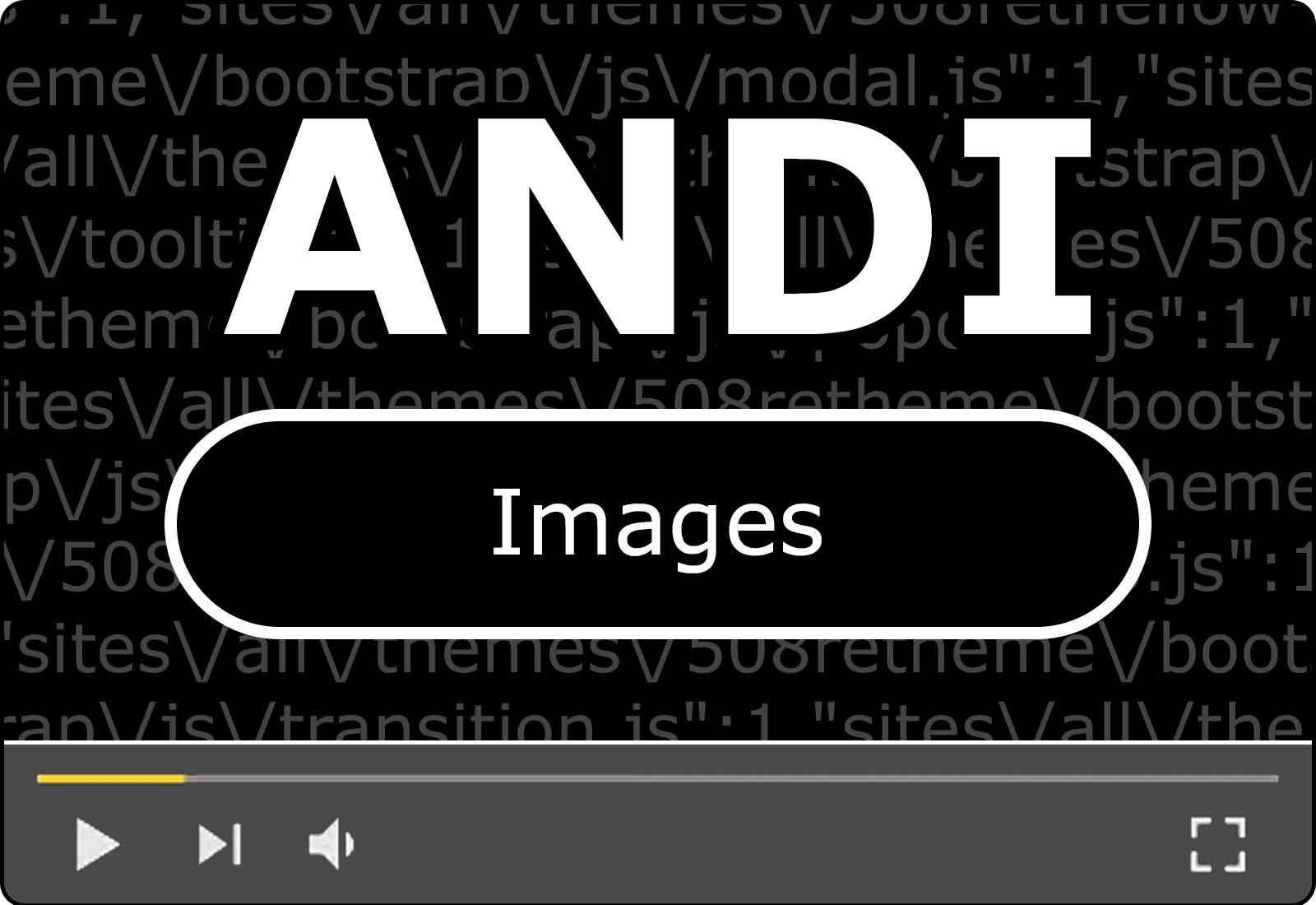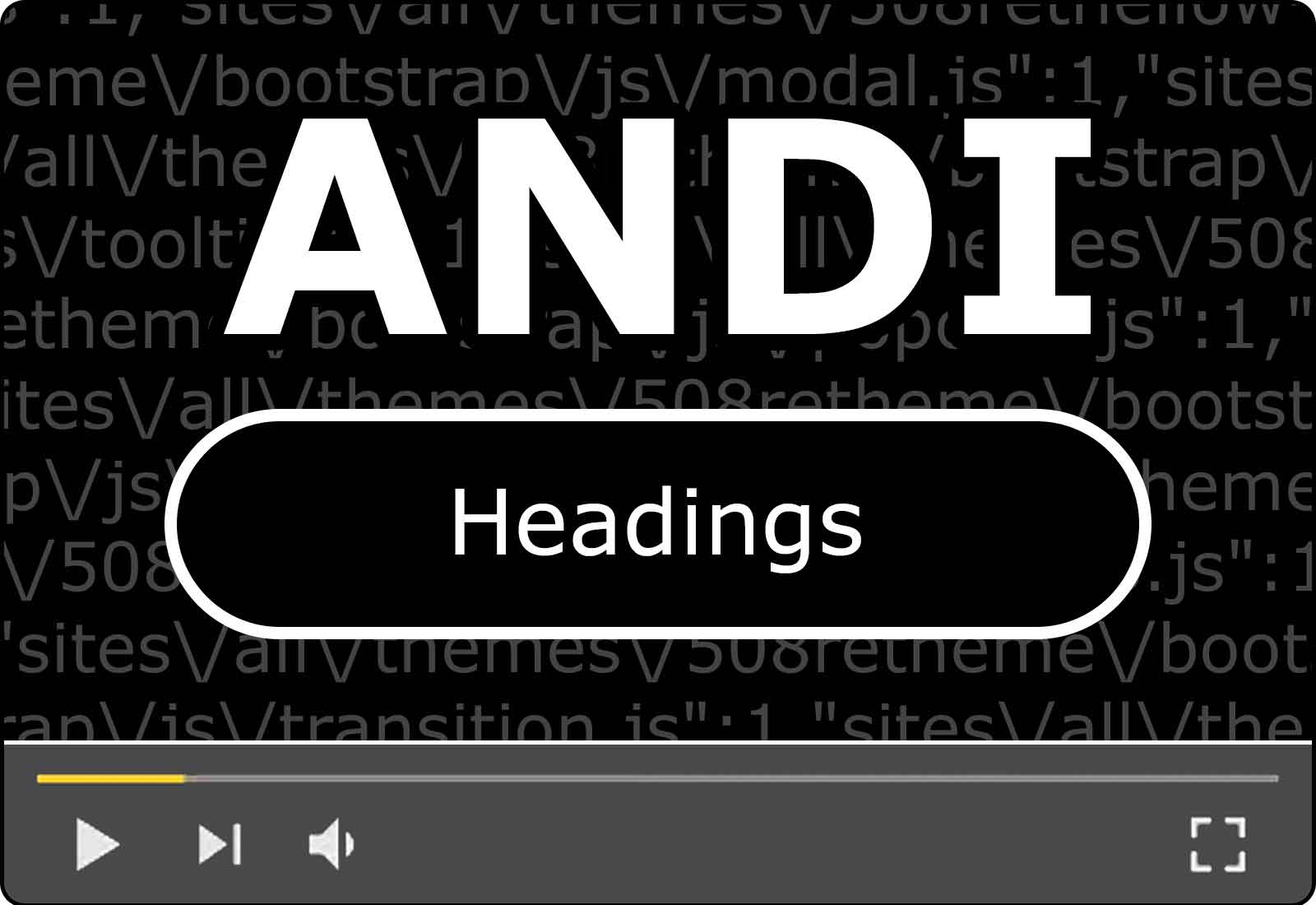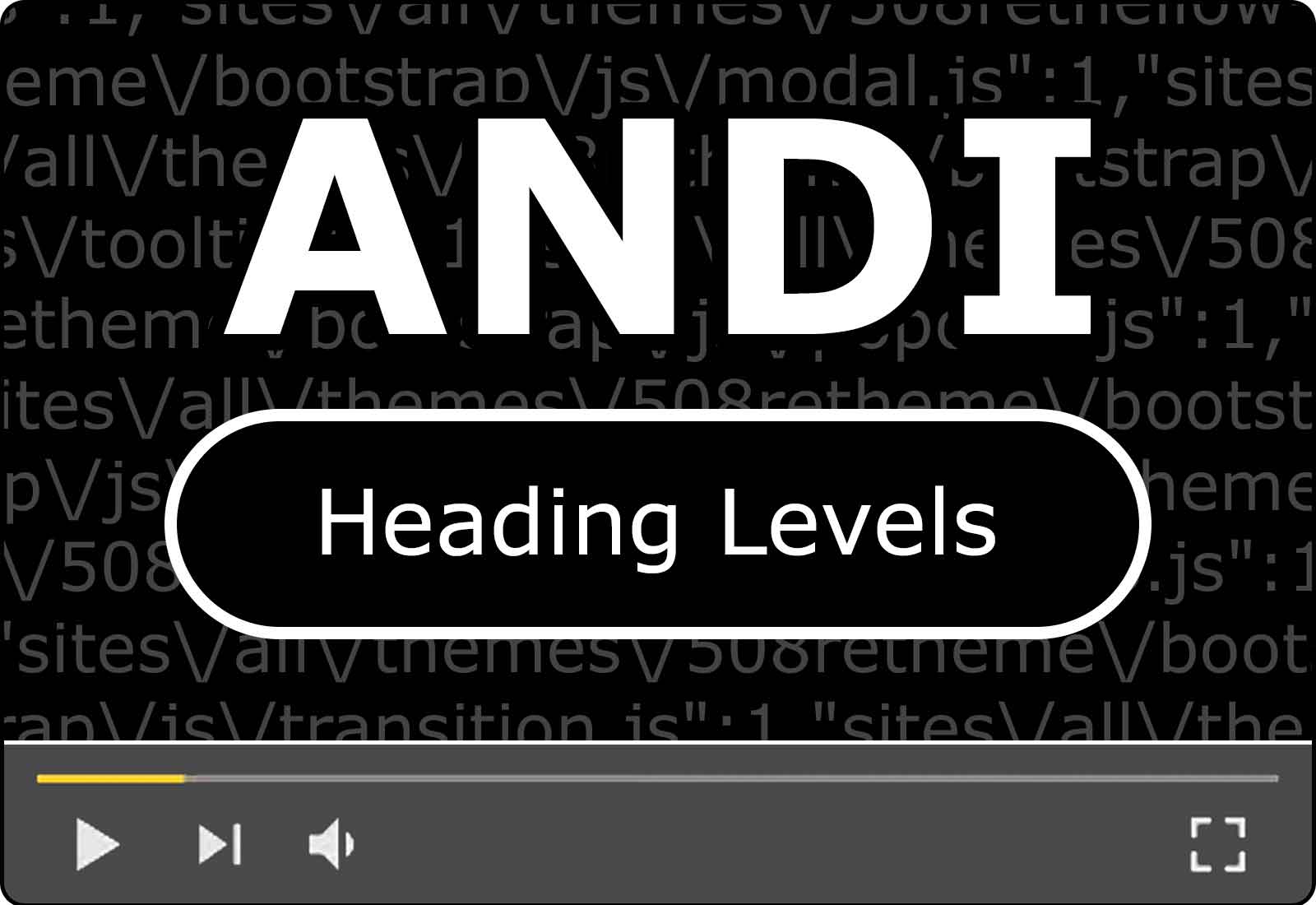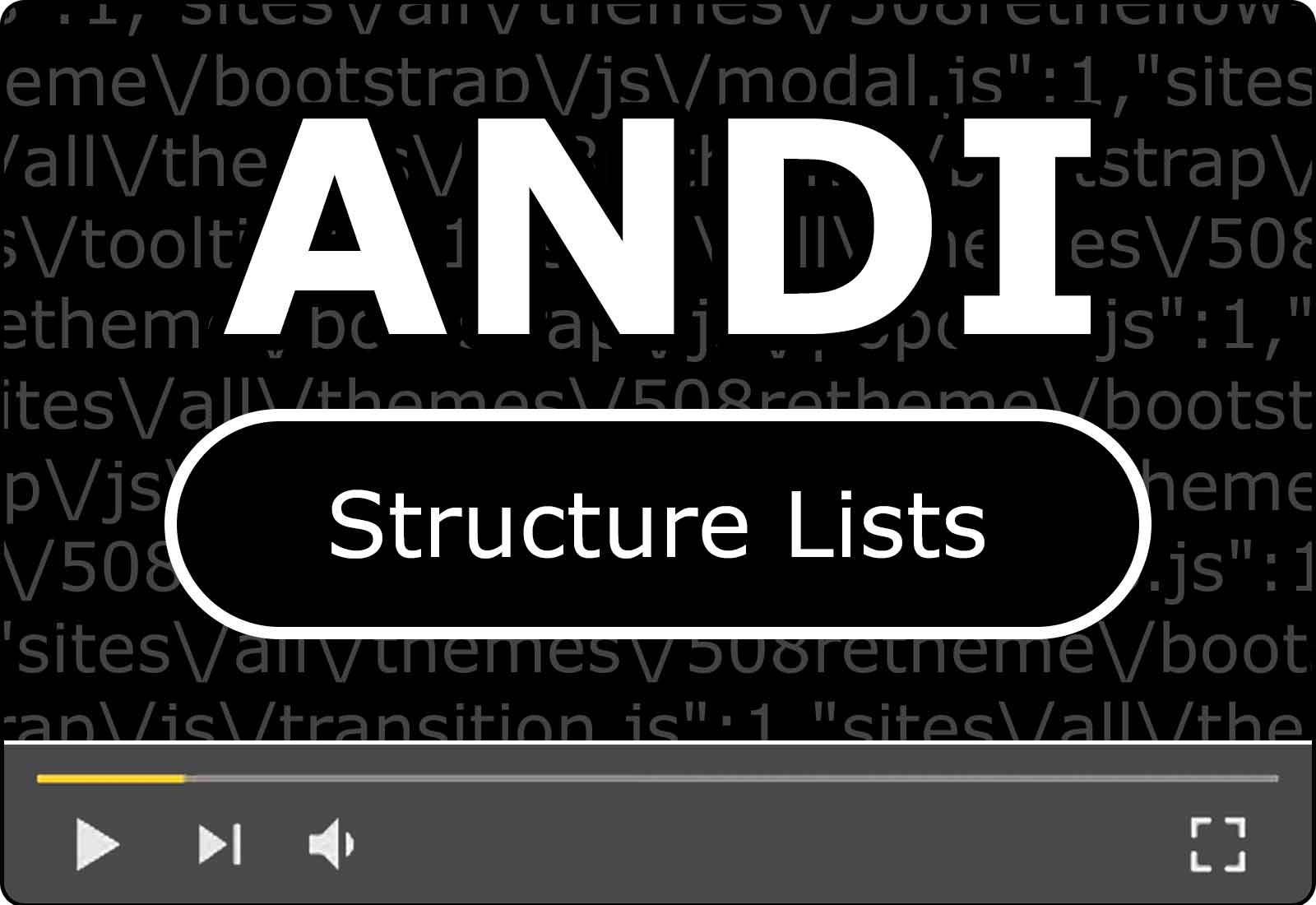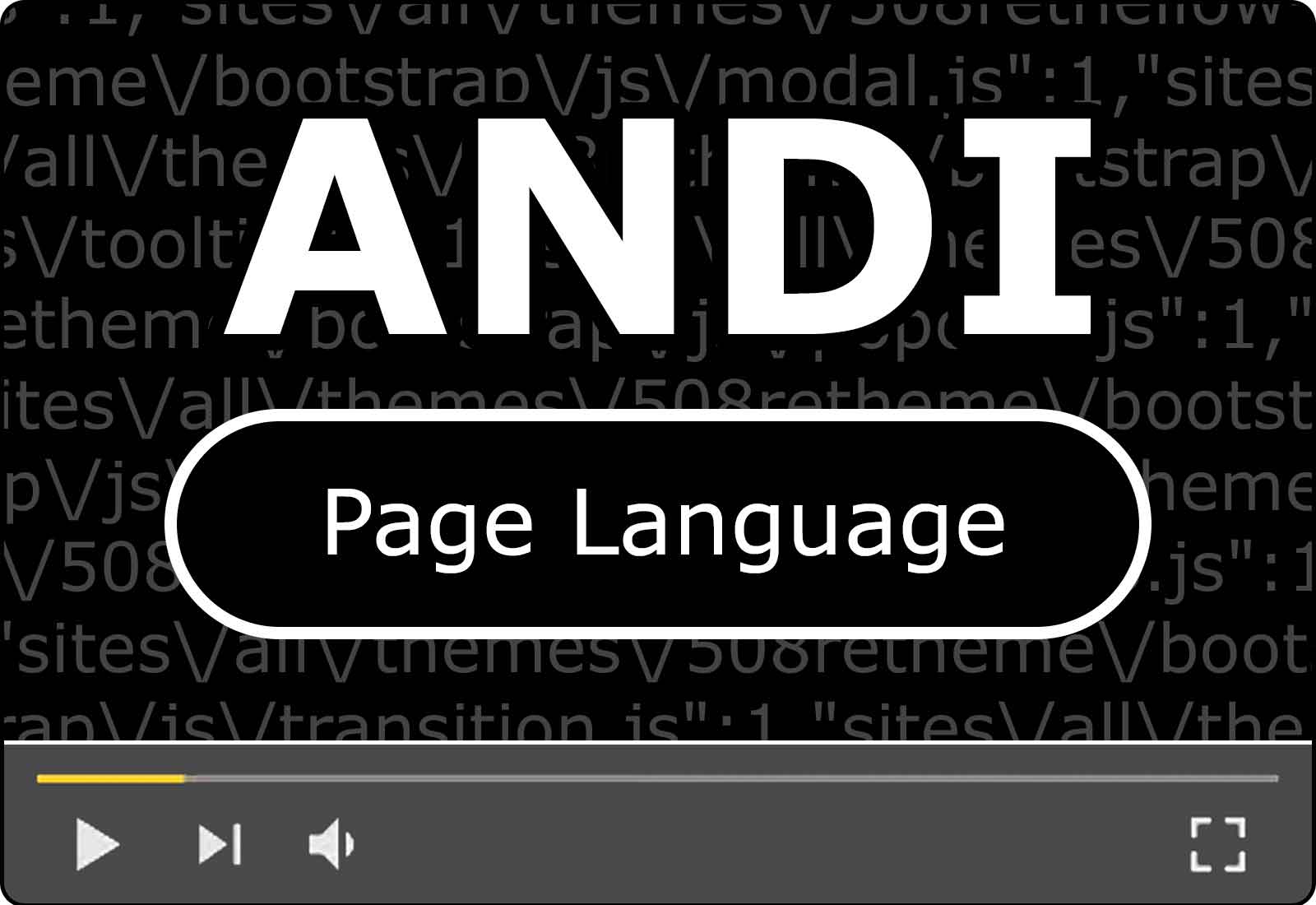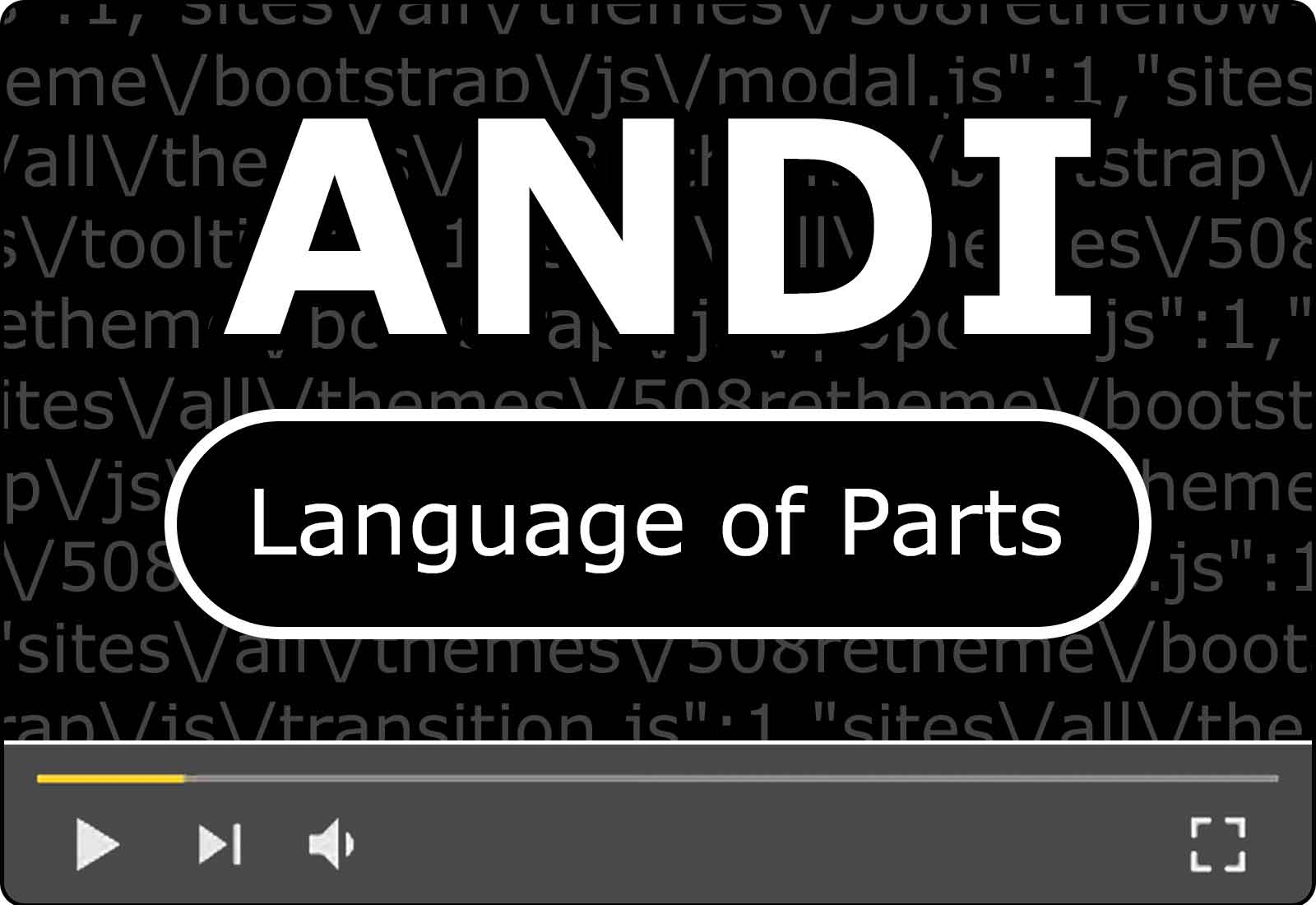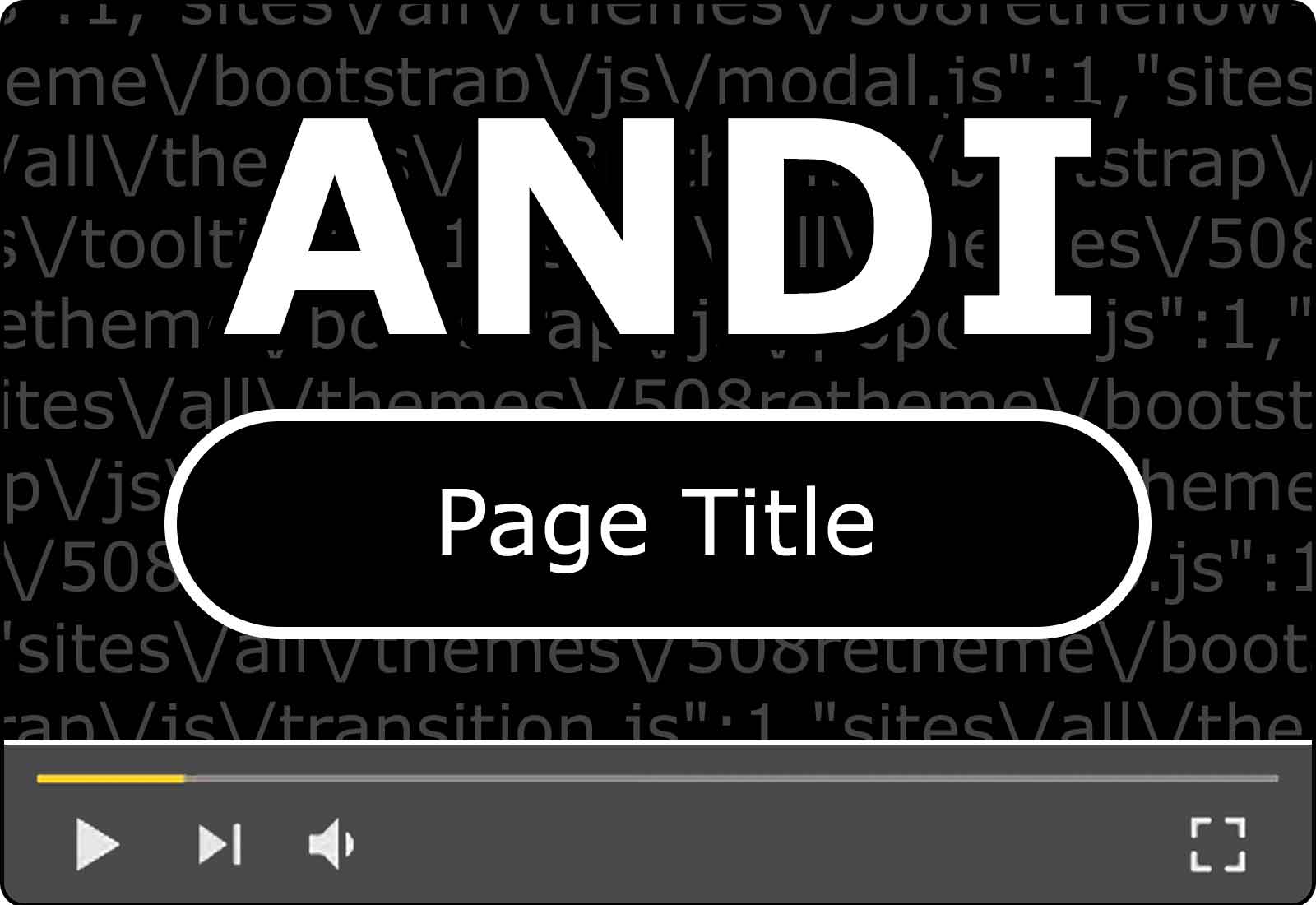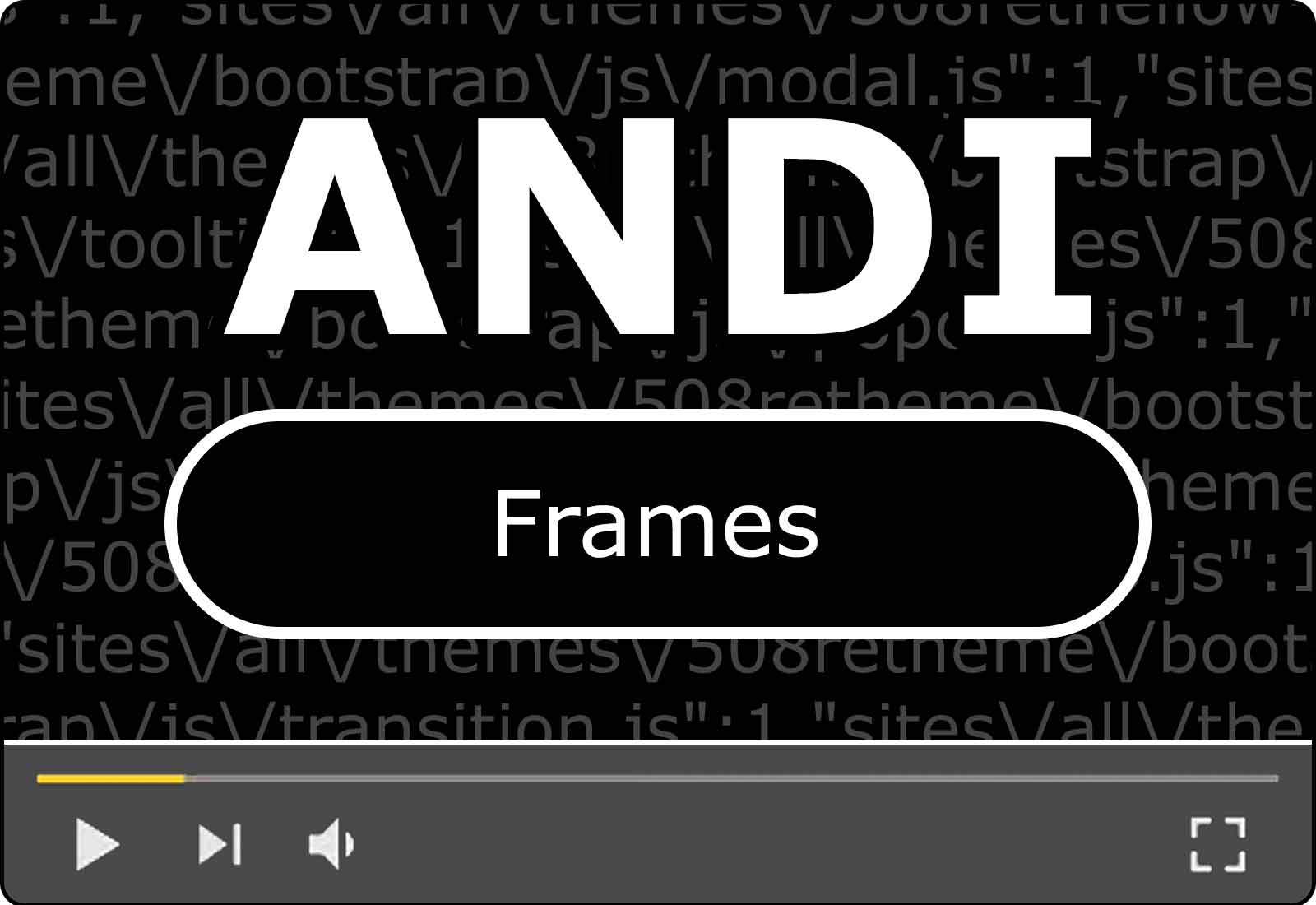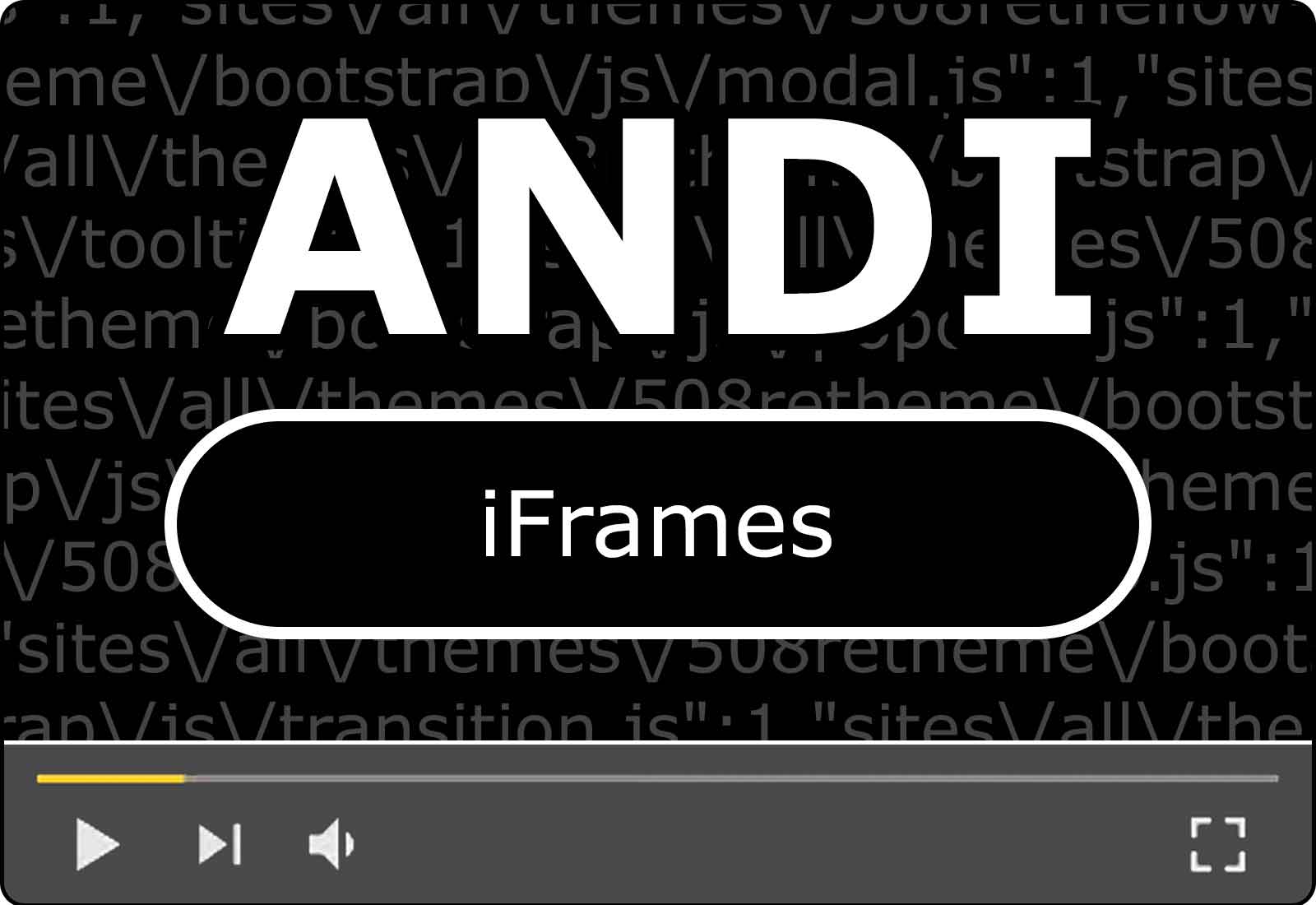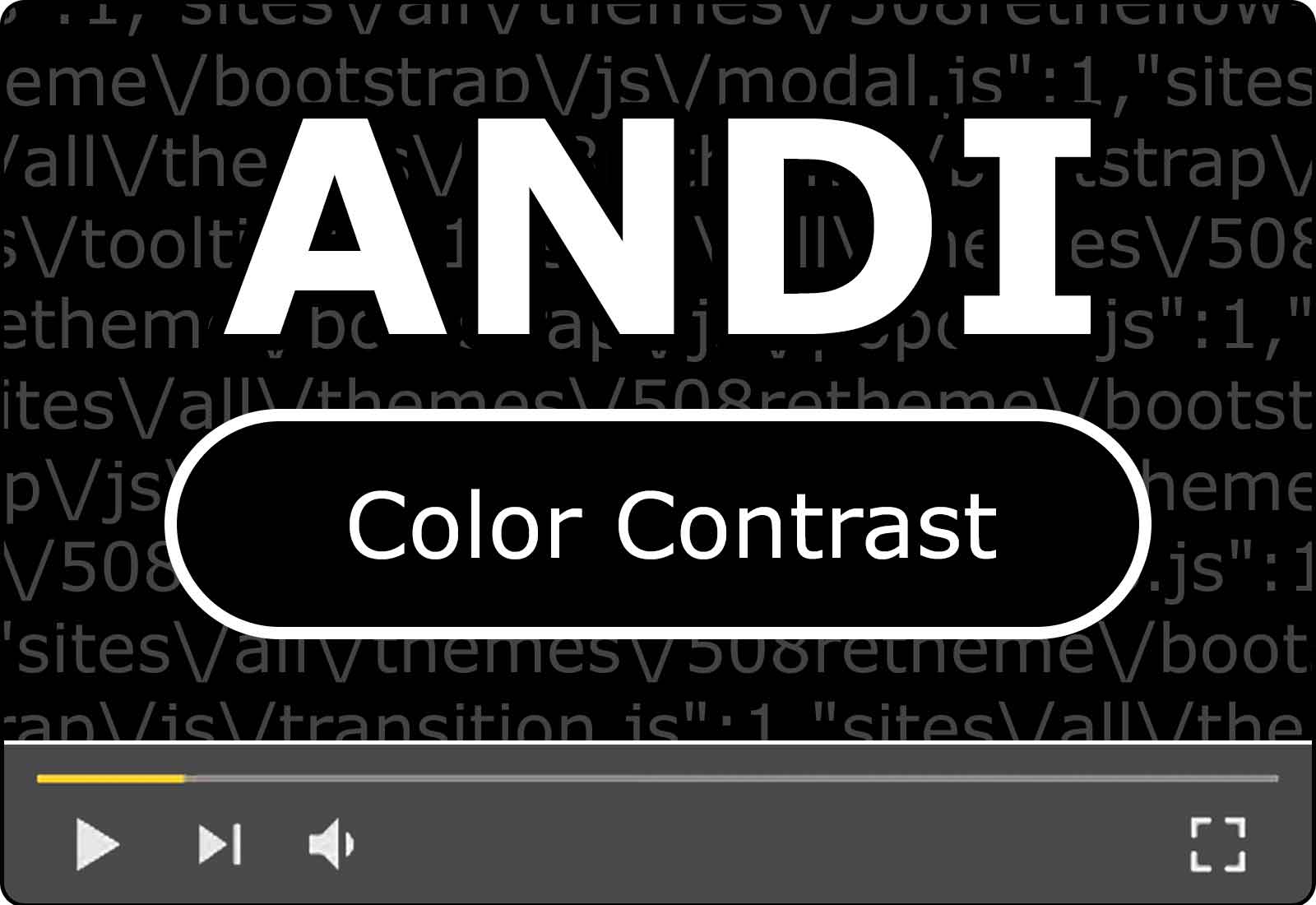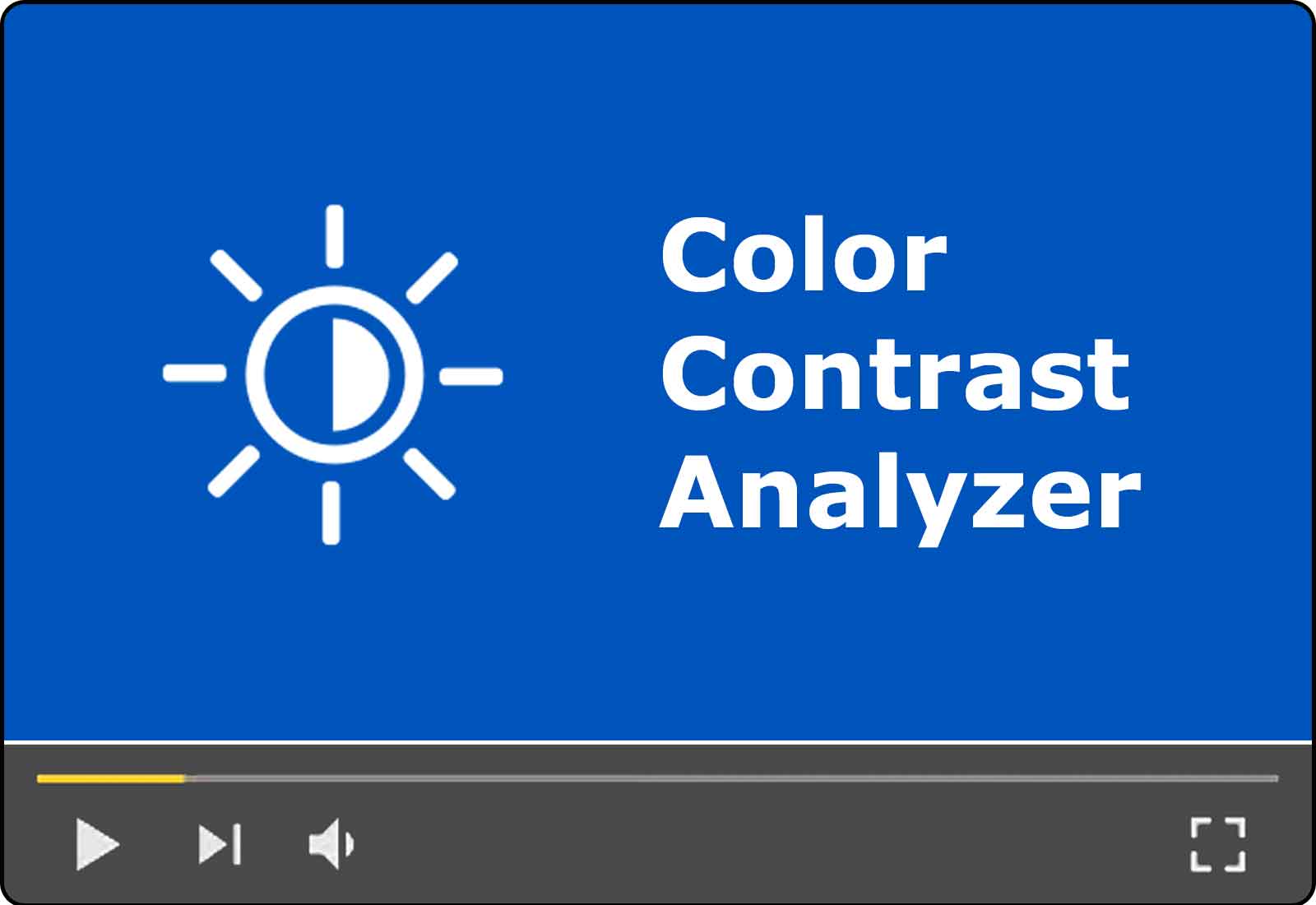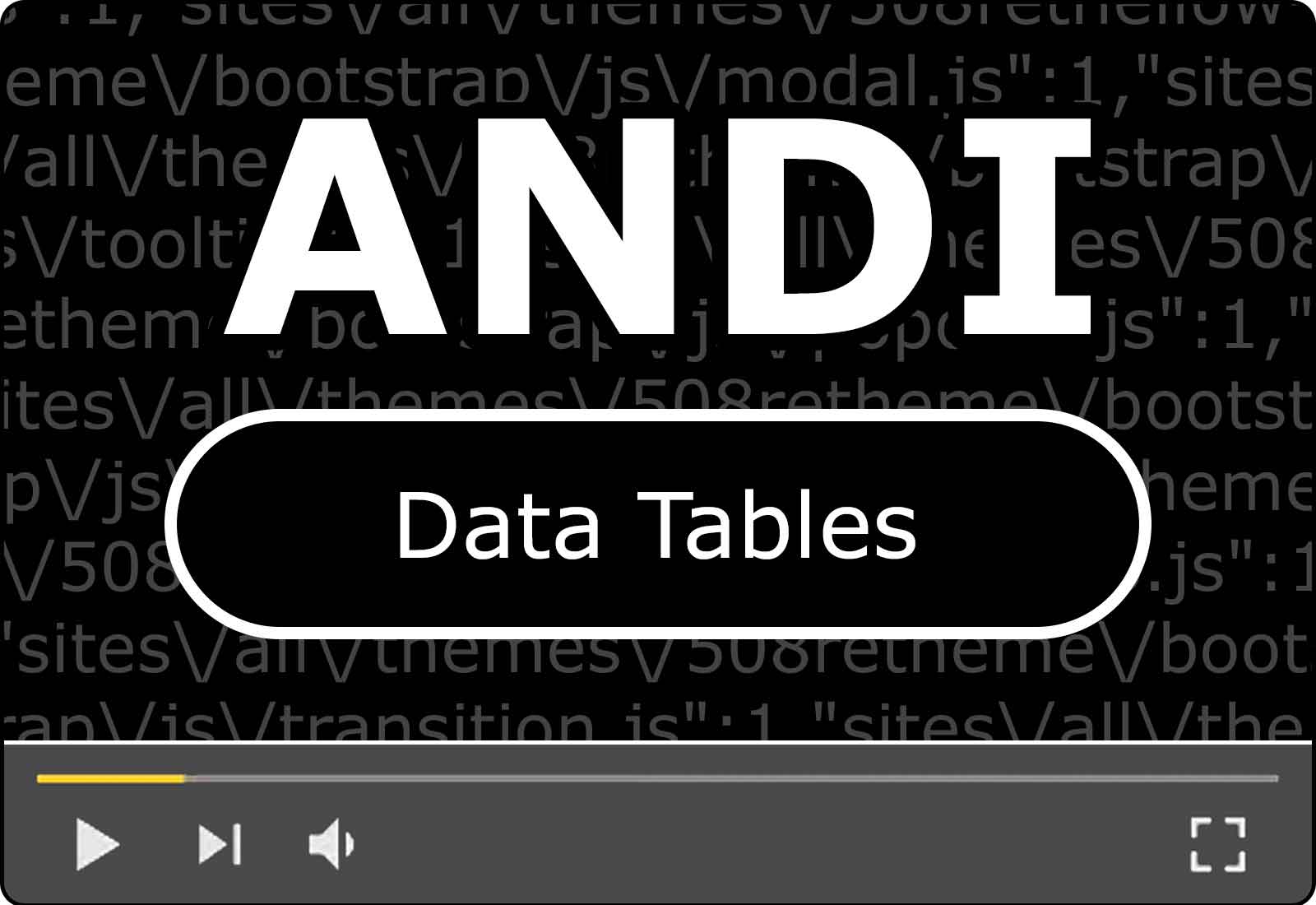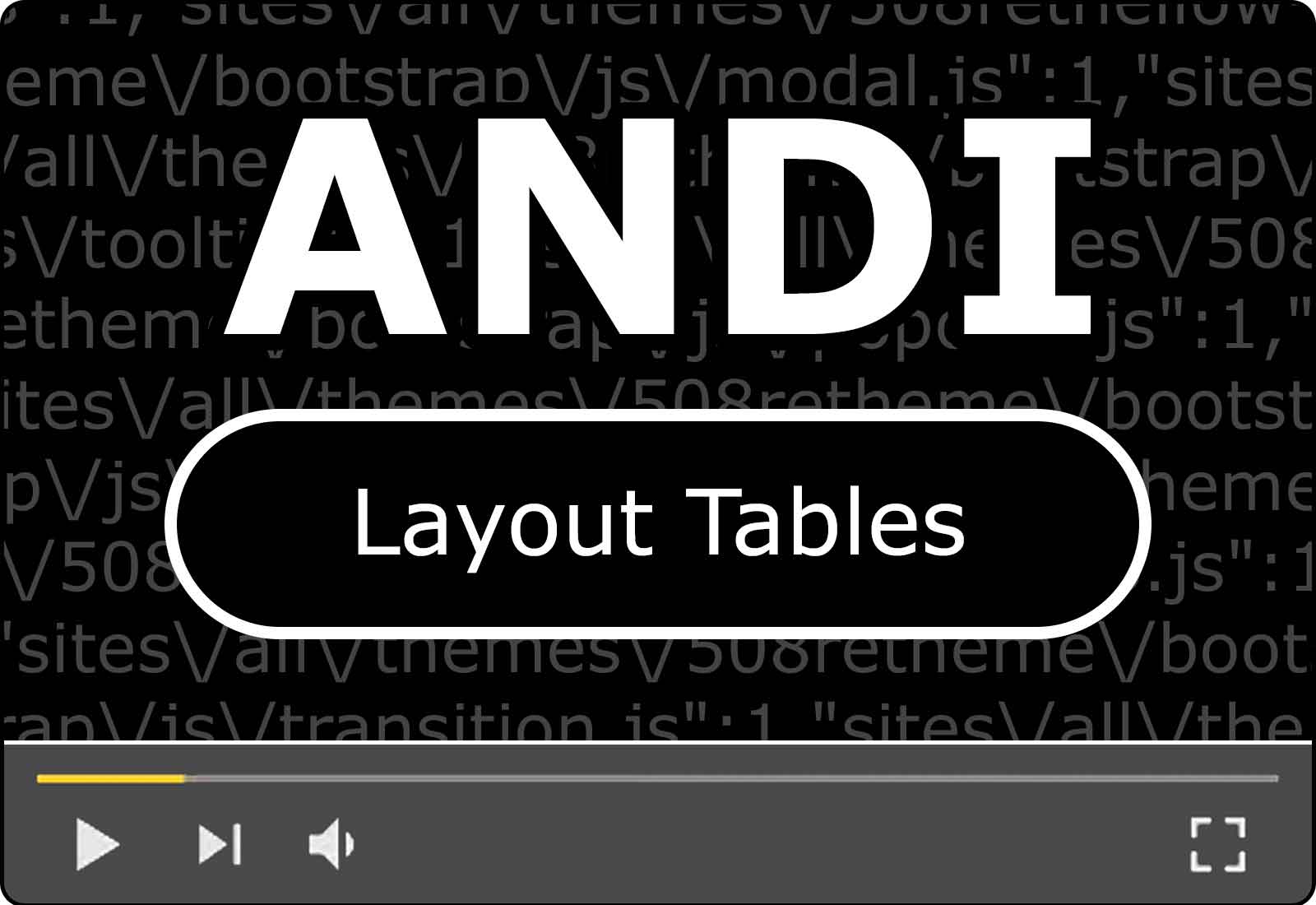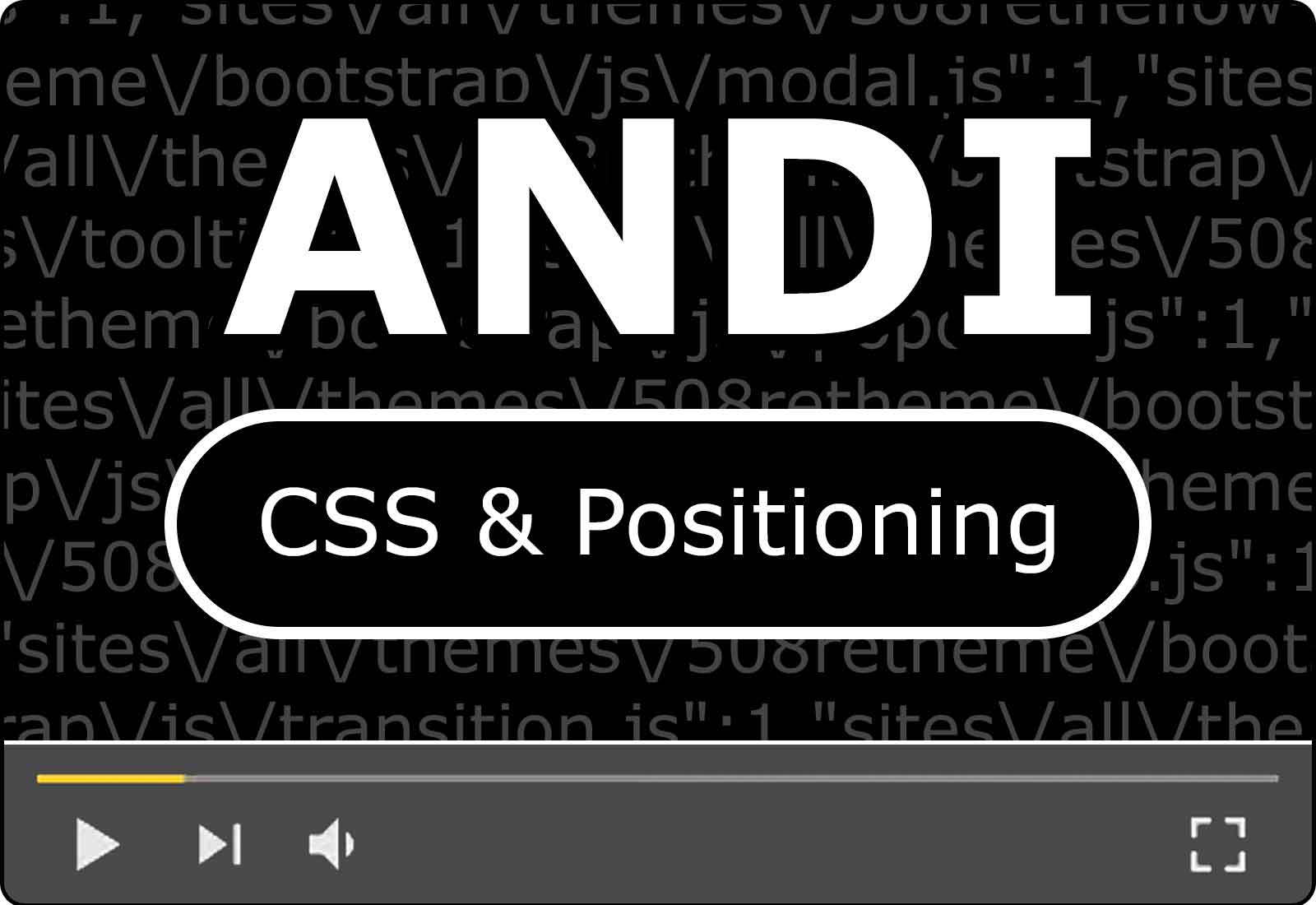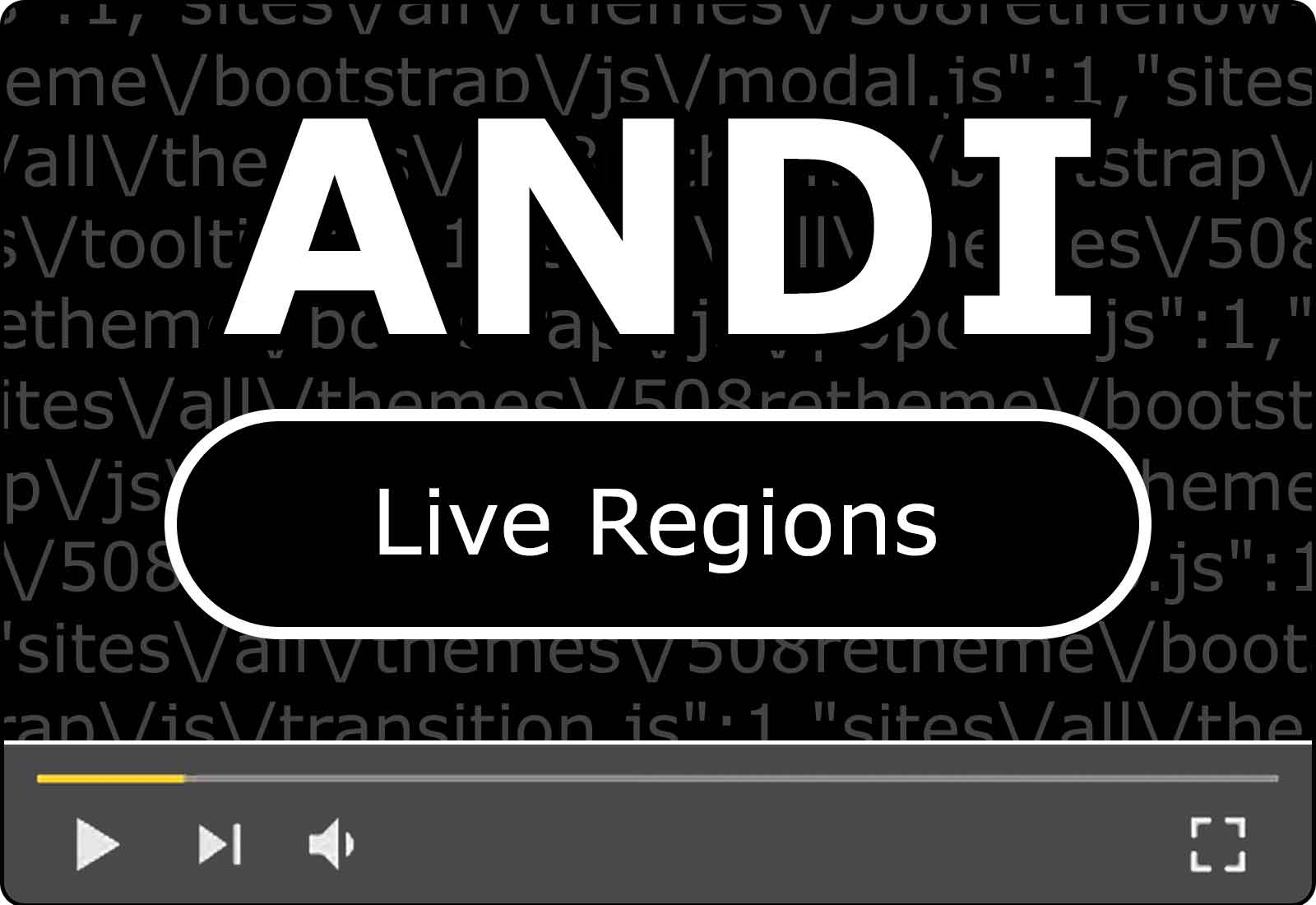Hosted by the Department of Homeland Security’s (DHS) Office of Accessible Systems and Technology (OAST), the Interagency Trusted Tester Program has created the following video series to explain and demonstrate how to use the Accessible Name & Description Inspector (ANDI) testing tool to inspect web pages for conformance with the Revised Section 508 Standards. The following video series is broken up into 18 parts, each aligned to a specific ANDI module.
Overview of the Accessible Name & Description Inspector (ANDI) tool, a web accessibility inspection tool, which performs single page testing to automatically detect accessibility issues.
0h 5:30m
Learn how to use the ANDI Focusable Elements modules to analyze all focusable interactive elements with keyboard access and visual focus. Note: This ANDI module is not used to test visual focus.
0h 1:46m
Understand how to use ANDI’s Links/Buttons module to inspect interactive links and buttons to evaluate for accessibility so users will know where the link will take them if selected.
0h 2:27m
Discover the features of the ANDI Graphics/Images module to test meaningful, decoratives, and background images for accessibility so the user has a text alternative that serves the equivalent purpose.
0h 2:49m
Learn how to use the ANDI Structures module to inspect each visual heading on the page and validate that it is programmatically defined and to provide descriptive headings for sections of content.
0h 1:50m
Understand how to use the ANDI Structures module to verify that the page content contains logical heading levels and the heading levels are programmed accurately, and to provide descriptive headings for content structure.
0h 2:06m
Discover how to use the ANDI Structures module to inspect visually apparent lists on the page to ensure the programmatic markup conveys the correct list type and list relationship in its structure.
0h 2:09m
Learn how to use the ANDI Structures module to identify the page’s primary human language and ensure it is programmatically identified to ensure that content developers provide information in the web page that user agents (e.g., browsers, assistive technology, operating systems) need to present text and other linguistic content correctly.
0h 1:36m
Understand how to use the ANDI Structures module to ensure that all written content, regardless of how many (human) languages are used, is programmatically identified correctly to ensure that user agents (e.g., browsers, assistive technology, software) can correctly present content written in multiple languages.
0h 1:51m
Discover how to use the ANDI Structures module to ensure that every web page contains a <title> element that will identify the purpose of the page to ensure it is distinguishable from other web pages.
0h 1:19m
Learn how to use the ANDI Frames module to detect and verify that all frames provide a descriptive title which adequately identifies the frame’s content.
0h 1:10m
Understand how to use the ANDI iframes module to verify that all iframes provide a descriptive title which adequately identifies the iframe’s content.
0h 1:31m
Discover how to use the ANDI Color Contrast module to ensure that text has sufficient contrast with its background so that it can be read by people with moderately low vision (i.e. those who generally do not use contrast-enhancing assistive technology).
0h 2:10m
Module 14: Color Contrast Analyzer
Learn how to use The Paciello Group’s Color Contrast Analyzer (CCA) to ensure the contrast ratio between text, and images of text, and it's background is sufficient. CCA is used to inspect color contrast when contrast cannot be programmatically identified by ANDI. Visit the Testing Tools for Web for download information.
0h 2:33m
Understand how to use the ANDI Tables module to inspect data tables for accessibility and ensure that the information, structure, and relationships conveyed through presentation can be programmatically determined or are available in text.
0h 2:24m
Discover how to use the ANDI Tables module to inspect layout tables for accessibility to verify the table roles and ANDI output does not display table structure elements reserved for data tables.
0h 2:11m
Module 17: CSS Content and Positioning
Learn how to use the ANDI Hidden Content module to test meaningful content inserted into a page using Cascading Style Sheets (CSS) to ensure meaningful information is presented in another way on the page.
0h 2:55m
Understand how to use the ANDI Structures module to locate and inspect newly revealed content changes so that a notification of changes to these items is available to user agents (i.e. browsers, assistive technology, software), including assistive technologies.
0h 1:52m
Reviewed/Updated: March 2025


